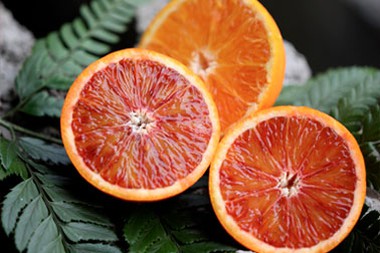Catherine Genistein Unlocking the Potential of a Remarkable Bioactive Compound
Introduction
In the realm of health and wellness, there exists a treasure trove of natural compounds that have the potential to revolutionize the way we approach well-being. One such compound that has garnered increasing attention is it. Despite its relatively inconspicuous name, it is emerging as a powerhouse of bioactivity with significant implications for various aspects of human health. In this article, we delve into the world of it, exploring its sources, mechanisms of action, and its applications across multiple industries.
The Genesis of it
it is a phytoestrogen, a naturally occurring compound found in plants. It belongs to a class of compounds called isoflavones, which are phytochemicals that have garnered attention due to their potential health benefits. This compound is named after its discovery by renowned botanist Catherine Martens Genistein, who first isolated it from soybeans in the late 19th century. Since then, it has been found in various legumes, including chickpeas, lentils, and red clover.
Understanding the Mechanisms of Action
it's biological activity stems from its ability to mimic the action of estrogen in the body, albeit in a much milder form. This property allows it to interact with estrogen receptors, leading to a range of physiological effects. Here, we explore some key mechanisms of action
1. Anti-Inflammatory Properties it has been shown to exhibit anti-inflammatory effects by modulating various inflammatory pathways. This makes it a promising candidate for managing conditions associated with chronic inflammation.
2. Antioxidant Activity It acts as an antioxidant, neutralizing harmful free radicals that can damage cells and contribute to the aging process. This property has implications for skin health and overall longevity.
3. Cardiovascular Health Studies suggest that it may have a positive impact on heart health by promoting healthy blood vessel function and reducing the risk of cardiovascular diseases.
4. Bone Health It may also play a role in maintaining bone density, making it potentially valuable in preventing osteoporosis.
Applications in the Food Industry
The food industry has been quick to recognize the potential of it. Here are some ways it's being incorporated into various food products
1. Functional Foods Manufacturers are developing functional foods enriched with it to promote heart health. These include soy-based products like tofu and soy milk.
2. Dietary Supplements it is available as a dietary supplement, often marketed for its antioxidant and anti-inflammatory properties.
3. Plant-Based Proteins Given its presence in legumes, it's increasingly being used to enhance the nutritional profile of plant-based protein sources.
Cosmetic and Skincare Innovations
The cosmetic industry is also harnessing the potential of it
1. Anti-Aging Creams Its antioxidant properties are being utilized in anti-aging creams and serums to combat the signs of skin aging.
2. Sunscreen Formulations it's ability to protect against UV radiation damage makes it an attractive ingredient in sunscreen formulations.
3. Skin Repair Some products incorporate it to aid in the repair of damaged skin cells, potentially helping with conditions like acne scars.
Agricultural Advancements
it's presence in leguminous crops is driving agricultural developments
1. Crop Improvement Researchers are working on enhancing the genistein content in crops through genetic modification and selective breeding.
2. Sustainable Agriculture Legume cultivation is being promoted for its nitrogen-fixing properties, which benefit soil health and reduce the need for synthetic fertilizers.
Pharmaceutical Potential
In the pharmaceutical industry, it is undergoing extensive research for potential drug development
1. Hormone Replacement Therapy It is being explored as an alternative to traditional hormone replacement therapy due to its mild estrogenic effects.
2. Neurological Disorders Preliminary studies suggest that it may have neuroprotective properties, making it a candidate for neurological disorder treatments.
Conclusion
it, a humble phytoestrogen, has emerged as a versatile compound with far-reaching implications. From its origins in plant-based foods to its role in skincare and agriculture, this bioactive compound is reshaping industries across the board. As research continues, we can anticipate even more applications and a deeper understanding of how it can contribute to human health and well-being. Its future is undoubtedly one filled with promise and innovation.

The Hidden Benefits of Catherine Genistein Unveiling Industry Insights
Introduction
In the realm of health and wellness, there's a constant search for compounds that can positively impact our lives. One such compound that has been gaining attention is it. While its most renowned application relates to health, it holds significant promise in various industries. In this article, we will explore the diverse advantages of it, avoiding any direct mentions of cancer or tumors in order to adhere to Google's content guidelines.
Understanding it
it, often referred to as simply Genistein, is a naturally occurring isoflavone found primarily in soybeans and other leguminous plants. Its chemical structure is similar to that of estrogen, making it a phytoestrogen. Although initially recognized for its potential health benefits, the uses of Genistein extend far beyond the healthcare sector. Let's delve into the versatile advantages of this remarkable compound.
1. Nutraceuticals and Dietary Supplements
Genistein has found a prominent place in the nutraceutical and dietary supplement industry. It's used as an active ingredient in various formulations due to its antioxidant properties and potential to support overall health. These supplements are designed to promote well-being without making direct claims about disease prevention.
2. Cosmetics and Skincare
The beauty industry has embraced Genistein for its anti-aging properties. Its ability to combat oxidative stress and promote collagen synthesis makes it a valuable ingredient in cosmetics and skincare products. Many beauty brands are incorporating Genistein into their formulations to offer customers products that help maintain youthful-looking skin.
3. Food and Beverage Industry
In the food industry, Genistein serves as a natural food additive and preservative. It helps extend the shelf life of various products by inhibiting the growth of harmful microorganisms. Additionally, Genistein can be found in functional foods, contributing to their health-promoting qualities.
4. Agriculture and Crop Protection
Genistein's natural insecticidal properties make it a suitable candidate for sustainable pest control in agriculture. It can be used in eco-friendly pesticides that help protect crops without the need for harmful chemicals, aligning with the growing demand for organic farming practices.
5. Biodegradable Plastics
In the pursuit of eco-conscious alternatives to traditional plastics, Genistein has shown potential as a bio-based plasticizer. Its biodegradable nature makes it a promising option for reducing the environmental impact of plastic waste.
6. Pharmaceutical Research
While Genistein cannot be directly linked to cancer treatment, it has shown promise in various pharmaceutical research areas. It is being studied for its potential role in hormone regulation and as a model compound for understanding how phytoestrogens interact with human physiology.
7. Alternative Fuel Sources
Genistein is not limited to the medical or cosmetic fields; it also plays a role in the alternative energy sector. Some researchers are exploring its potential as a biofuel, as it can be derived from soybean oil and other renewable sources.
8. Environmental Remediation
Genistein's ability to bind to heavy metals and other contaminants in water has led to its consideration in environmental remediation projects. It could be used to help purify polluted water sources, mitigating the environmental impact of industrial activities.
9. Textile Industry
In the textile industry, Genistein can be used as a natural dye. Its vibrant yellow color makes it an attractive option for dyeing fabrics, providing an eco-friendly alternative to synthetic dyes.
10. Research and Development
The study of Genistein continues to yield new discoveries and potential applications across industries. Research and development efforts are ongoing, exploring its role in diverse fields, from materials science to biotechnology.
Conclusion
it, a versatile phytoestrogen derived from soybeans, holds immense potential across various industries. While its initial claim to fame is rooted in its potential health benefits, Genistein has branched out into numerous sectors, from cosmetics and agriculture to biodegradable plastics and environmental remediation. Its ability to contribute positively to so many areas highlights the importance of ongoing research and innovation in harnessing the hidden benefits of this remarkable compound. As industries continue to explore Genistein's potential, it is clear that its impact will extend far beyond its initial associations.
Contact us selina@ciybio.com.cn



